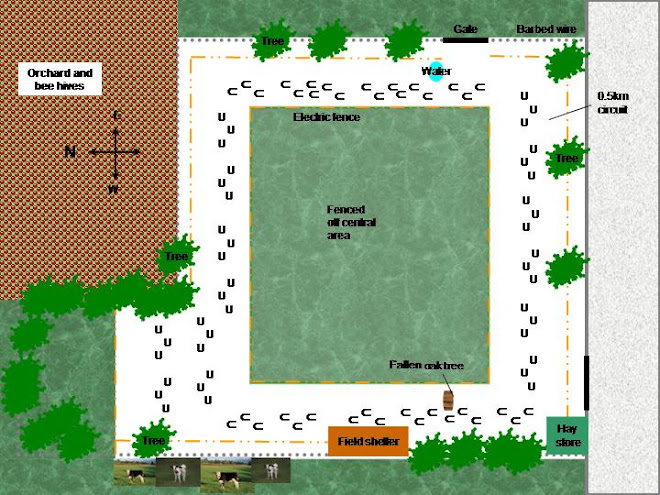This post is inspired by my current horse; Grace.
Grace is barefoot and is in transition. Her shod feet were in poor condition and she is laminitic with suspected EPSM. To add further insult at sometime in her past she has received fairly traumatic injuries.
The reason I mention the laminitis, the EPSM and the injuries is that it is important to have a good understanding of the context in which a horse makes its transition.
Earlier this week, when I noticed that Grace was struggling to trot on a plain concrete surface it would have been very easy for 'Shoddies' (today's handle for people that shoe their horses) to blame her bare feet. It would have been equally easy to blame an influx of excess sugar from the spring grass. Or maybe even the EPSM. And I spent some time working through these thoughts.
After doing some research and sharing my thoughts with other experienced barefooters we figured out that the problem is at least in part related to her old injuries. It was even harder for me to realise that the school work that we have been doing to help with the injuries was also part of the problem. In fact it was Grace who had to point this out, I'd never have got there on my own.
So we have a smart, sensitive horse which was going lame on concrete - and at first glance it did look like a foot problem. In the bad old days she would have been shod and maybe with 'corrective' shoes. - However as this is not actually a foot problem she would still be lame. Then there would have been the endless rounds of nerve blocks, trot ups and pain killers and expense.
But because Grace is barefoot she can feel her feet. And because she can feel her feet her feedback to me about what is going wrong, where, is so much more accurate. Because I don't put on the shoes she hated so much she is learning to trust me and is getting more communicative as a result. Because shoes are not affecting the way Grace uses her feet and limbs I can more clearly observe what is happening in what circumstances.
Because the communication channels are not blurred in a multitude of ways by rings of steel we have been able to take a horse that was unsound in trot on concrete and get it sound again. And it didn't cost a penny or involve any drugs. And she is getting more trusting on an almost daily basis.
I am not saying Grace is cured and will forever be sound. I very much doubt this as there is so much more to unravel with her. But I do know that by taking her shoes off we removed a mask which hid problems rather than solved them. And don't get me started on shoes and laminitis :-)






















